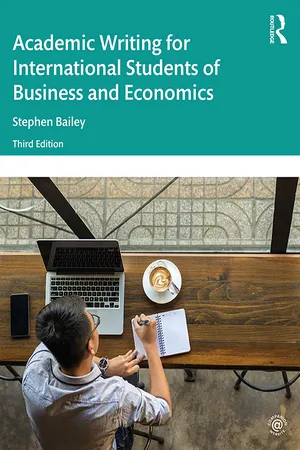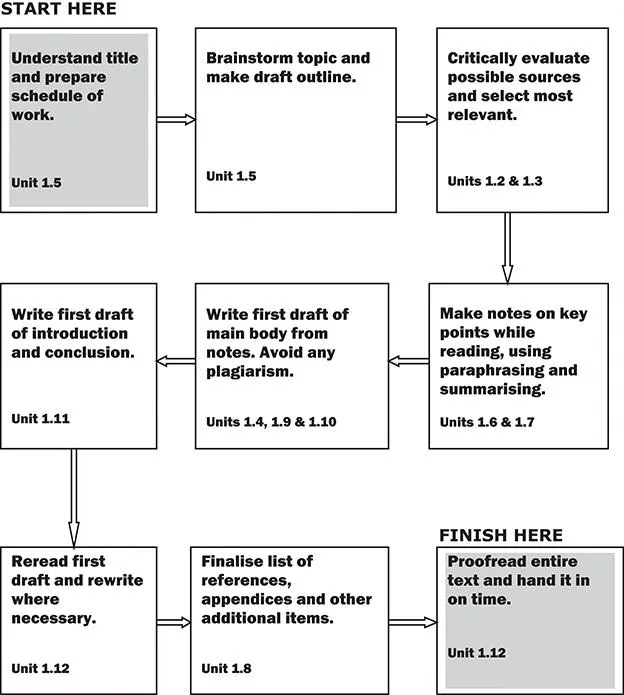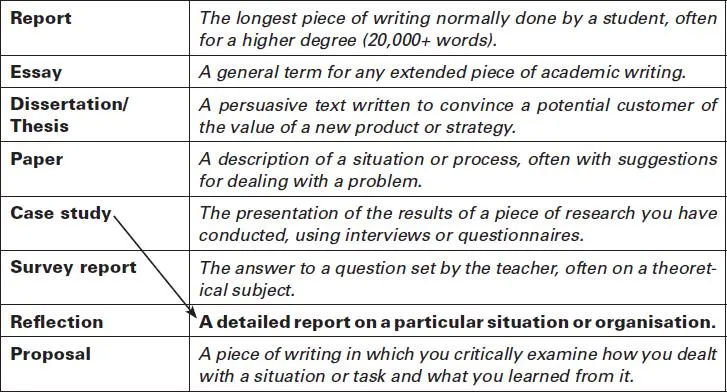
- 316 pages
- English
- ePUB (mobile friendly)
- Available on iOS & Android
Academic Writing for International Students of Business and Economics
About this book
The third edition of Academic Writing for International Students of Business and Economics is written to help international students succeed in writing essays, reports and other papers for their English-language academic courses. Thoroughly revised and updated to reflect issues such as diversity and sustainability, this book is designed to let students and teachers easily find the help they need, both in the classroom and for self-study.
The book is divided into five parts, comprising a total of 42 units:
- The Writing Process
- Elements of Writing
- Language Issues
- Vocabulary for Writing
- Writing Models
New topics in this edition include Writing in Groups, Written British and American English and Reflective Writing. In addition, the new interactive website has a full set of teaching notes as well as more challenging exercises, revision material and links to other sources. Additional features of the book include:
- Models provided for writing tasks such as case studies and literature reviews
- Use of authentic academic texts from a range of sources
- Designed for self-study as well as classroom use
- Useful at both undergraduate and postgraduate level
- A complete set of answers to the practice exercises
- Cross-references across all units
Providing a glossary to explain technical terms and written to deal with the specific language issues faced by international students of Business and Economics, this practical, user-friendly book is an invaluable guide to academic writing in English.
Frequently asked questions
- Essential is ideal for learners and professionals who enjoy exploring a wide range of subjects. Access the Essential Library with 800,000+ trusted titles and best-sellers across business, personal growth, and the humanities. Includes unlimited reading time and Standard Read Aloud voice.
- Complete: Perfect for advanced learners and researchers needing full, unrestricted access. Unlock 1.4M+ books across hundreds of subjects, including academic and specialized titles. The Complete Plan also includes advanced features like Premium Read Aloud and Research Assistant.
Please note we cannot support devices running on iOS 13 and Android 7 or earlier. Learn more about using the app.
Information
PART
1. The writing process


1.1 Basics of Writing
- the main features of academic writing
- the names of different writing tasks
- the format of short and long writing tasks
- the structure of sentences and paragraphs.
1. The purpose of academic writing
- to report on a piece of research the writer has conducted
- to answer a question the writer has been given or chosen
- to discuss a subject of common interest and give the writer’s view
- to synthesise research done by others on a topic

- ____________________________________________________
- ____________________________________________________
2. Features of academic writing


3. Common types of academic writing


4. The format of written assignments


Abstract List of contents List of tables Introduction Main body Literature review Case study Findings Discussion Conclusion Acknowledgements References Appendices |

- A short summary which explains the paper’s purpose and main findings.
……………………………………………………………………… - A list of all the sources the writer has mentioned in the text.
……………………………………………………………………… - A section, after the conclusion, where additional information is included.
……………………………………………………………………… - A short section where people who have helped the writer are thanked.
……………………………………………………………………… - Part of the main body in which the views of other writers on the topic are discussed.
……………………………………………………………………… - A section where one particular example is described in detail.
……………………………………………………………………… - A preliminary part of a book in which the author often explains her reasons for writing.
………………………………………………………………………

5. The components of academic writing

- The Effectiveness of Microcredit
- An evaluation of programmes in India and the Philippines
- Introduction
- In the last ten years considerable claims have been made about the value of microcredit (also known as microfinance); the provision of unsecured small loans to the poor in developing countries. But it has proved surprisingly difficult to accurately measure the effectiveness of these loans, without interference from other non-commercial factors.
Two recent studies have attempted to compare the effects on randomly-chosen groups of people with access to microcredit, compared to those without. The first (Bannerjee et al., 2009), based at Massachusetts...
Table of contents
- Cover
- Half Title
- Title Page
- Copyright Page
- Table of Contents
- Acknowledgements
- Introduction for Teachers
- Introduction for Students
- The Importance of Writing for Students of Business and Economics
- Written British and American English – A Short Guide
- Academic Writing Quiz
- Part 1: The Writing Process
- Part 2: Elements of Writing
- Part 3: Language Issues
- Part 4: Vocabulary for Writing
- Part 5: Writing Models
- Glossary
- Answers
- Index